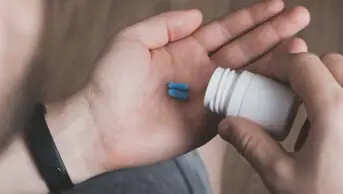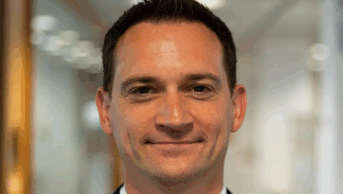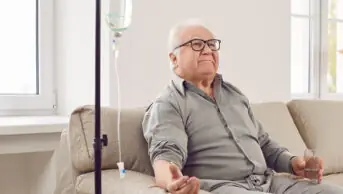This recording was taken from an interview with Fazila Jumabhoy, conducted on 7 January 2021. The transcript, with questions, is included below along with an update from Fazila on how the vaccination programme has progressed since the recording.
How did you set up your COVID-19 vaccination programme?
Our primary care network (PCN) is fairly large, covering about 75,000 patients across 8 surgeries, so we created a COVID-19 taskforce to coordinate our efforts. This taskforce comprised a lead GP, a few lead practice managers and myself as a lead pharmacist. Together, we coordinated receiving the vaccine from secondary care. We also identified a designated PCN site, and now organise patients to be vaccinated by trained staff.
Our first allocation of the vaccine was as part of the ‘wave two’ vaccine sites. And we decided to roll out our first vaccination programme on a single Saturday, to minimise the disruption to already booked clinics and appointments at our host site, a day-to-day-running GP practice.
Just two days before, we had confirmation from NHS England that we were allowed to draw up a sixth dose from one vial if we were able to draw it up, which was great, because we were able to vaccinate over 150 more patients. Being a wave-two site helped, because we were able to call on the wisdom and expertise from wave one sites, which had just done vaccinations over the previous day or two.
How do you get patients involved?
I have to credit the admin teams within our practices, because they have been brilliant. Within the PCN, searches were created on clinical systems to identify those aged over 80 years. Out of those, we prioritised those with multiple comorbidities or who had previously been asked to shield. Our admin teams had one-to-one phone calls with patients directly to organise the appointment. Then on the day, of course, the practitioner responsible for vaccinating spoke directly to the patient to obtain valid consent.
Care home staff have also been very proactive and engaged. They’ve taken on the responsibility for gaining consent and communicating with patients, liaising with the next of kin, or legal representatives, where capacity is a concern.
How many people did you vaccinate on your first day?
We were successful in retrieving 6 doses out of almost every vial, which resulted in us vaccinating just over 1,150 patients that first Saturday, which was fantastic. It was really satisfying and humbling to see first hand how grateful people were at receiving the vaccine as a light of hope.
Did you face any challenges?
There were logistical challenges. For instance, we had to ensure that we had the right staffing levels to host a full day of vaccinations; Saturday is a non-working day for a lot of our staff. This required a lot of changes to shift patterns.
With the Pfizer/BioNTech vaccine being very new, there was a lot of nervousness around using and handling such a delicate vaccine. It comes in a multi-dose vial that needs diluting, which added an extra layer of complexity, and even the most experienced vaccinators were a little bit concerned about using it.
I have to give a big shout-out to the pharmacy departments at the University of Bradford and the University of Huddersfield, because they’ve been very helpful in sourcing some vials for our more nervous staff to practise on.
Do your patients have any concerns?
The patients have fallen into two categories. The first cohort of patients are raring to go and have been very grateful for the opportunity. Although because it’s a new vaccine, they have also had questions: “When will I be protected against COVID-19?”; “When will family members be receiving the vaccine?”; “Will I be getting any side effects from the vaccine?”; “How likely am I to get COVID following having the vaccination?” Those are the more common questions.
With the cohort of patients who are more sceptical about having the vaccination, they need to be engaged in a different way. For instance, a language barrier could be an issue, so you could reach out to your network to see if any of your staff members can speak their language. We are creating videos in different languages to increase the uptake for harder-to-reach communities. And I’m recording a British Sign Language video to reach out to the deaf community.
When it comes to public education, pharmacy teams are in the best place to be giving that information out to patients. There’s a lot of misinformation out there, and we need to be combating that rather than fuelling it. Both vaccinations we have access to have gone through a rigorous approval process by the Medicines and Healthcare products Regulatory Agency, and they’re under continued surveillance. I think the public can have confidence in that. And I think if pharmacy teams can articulate that to patients and the public, then that will be one step forward in engagement.
What advice would you give to other localities setting up their own programmes?
I think one key thing is to be adaptable. We have had to adapt to changes of vaccination delivery time and the guidance is changing almost daily. We had to very quickly adapt to potentially have a reserve list of 200 patients, if we were able to optimise the sixth dose.
This process is a marathon and not a sprint. It’s extremely hard work coordinating such a vaccination programme across sites. Across PCNs, community pharmacies, mass vaccination sites and hospital trusts are vaccinating. Communication is important across sectors. And I think it’s important to remember that this work that we’re doing is extremely rewarding, as hard as it is.
What has happened since our chat?
Since talking to The Pharmaceutical Journal, we have vaccinated more than 6,000 patients with both the Pfizer/BioNTech and AstraZeneca vaccines.
We are progressing to complete first doses of COVID-19 vaccinations to the top four priority groups. Having completed first doses to our care home residents and staff two weeks ago, we are now focusing on our housebound population.
As we move down the list of priority groups, we are using other platforms to communicate with patients to book appointments, namely text messaging and an online booking platform. This is working well, although those who cannot communicate in this way are still being contacted via telephone, and failing that, a letter is posted to their address.
In addition to Saturday clinics, we have now adopted evening clinics at our PCN’s designated site. With the flexibility of being able to transport the AstraZeneca vaccine to different sites within the PCN, we are starting to roll out surgery-specific vaccination clinics, which will help with accessibility for those patients finding it difficult to reach a different site.
Our PCN pharmacy team have been a crucial component to ensure clinics run smoothly and vaccine handling is managed appropriately. There is true camaraderie among everyone involved in the vaccine rollout, and it’s wonderful to see there are now many avenues where patients can be vaccinated.
Fazila Jumabhoy, lead clinical pharmacist, Central North Leeds Primary Care Network


